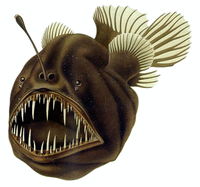
Photo from wikipedia
Different techniques have been employed for fish surveys in freshwater impoundments, however, despite the increasing applicability of underwater video systems for fish sampling in different aquatic ecosystems, such technology has… Click to show full abstract
Different techniques have been employed for fish surveys in freshwater impoundments, however, despite the increasing applicability of underwater video systems for fish sampling in different aquatic ecosystems, such technology has not been tested in reservoirs. This study compares estimates of fish species richness, community composition, and size structure derived from visual census (VC) and underwater video (UWV) in two Neotropical reservoirs. The total number of species recorded by both sampling methods was similar, even though UWV recorded higher mean number of species than VC, in both reservoirs. In general, VC was more efficient in recording cryptic and resident species, while UWV, was better for highly mobile species. Considering size classes, VC was more efficient than UWV in detecting smaller individuals (i.e., 31–79 mm total length). Although observational sampling methods depend on water transparency, UWV can be considered a complementary and promising technique for fish surveys in shallow areas of clear reservoirs.
Journal Title: Environmental Biology of Fishes
Year Published: 2020
Link to full text (if available)
Share on Social Media: Sign Up to like & get
recommendations!